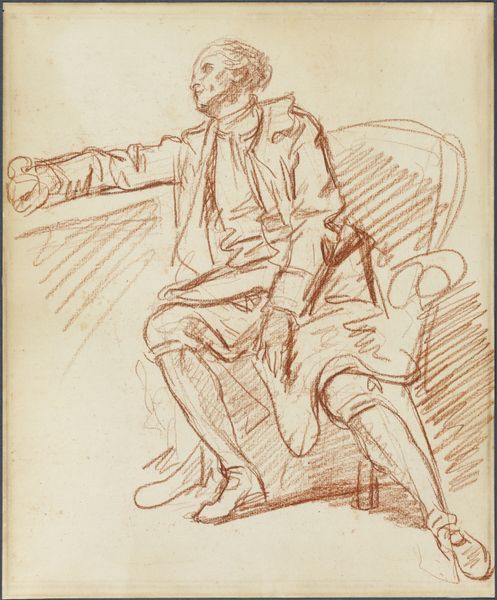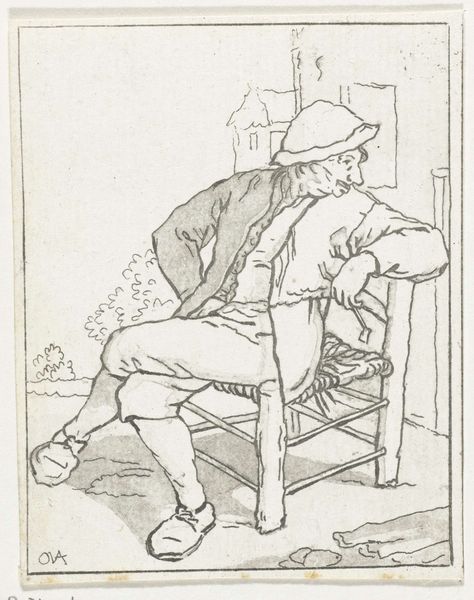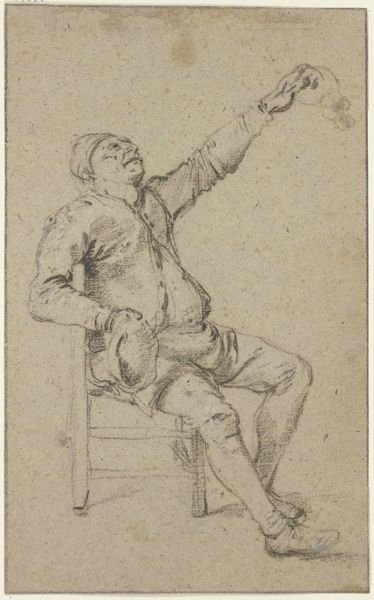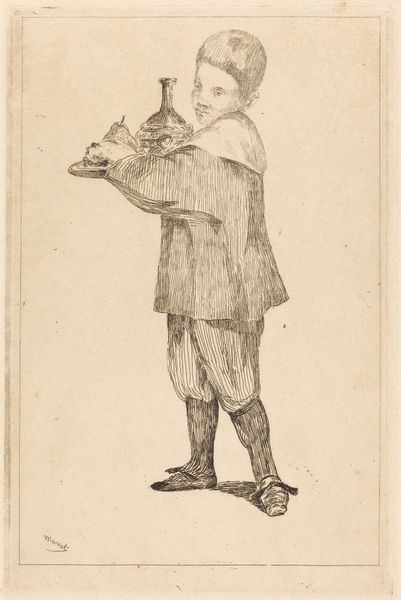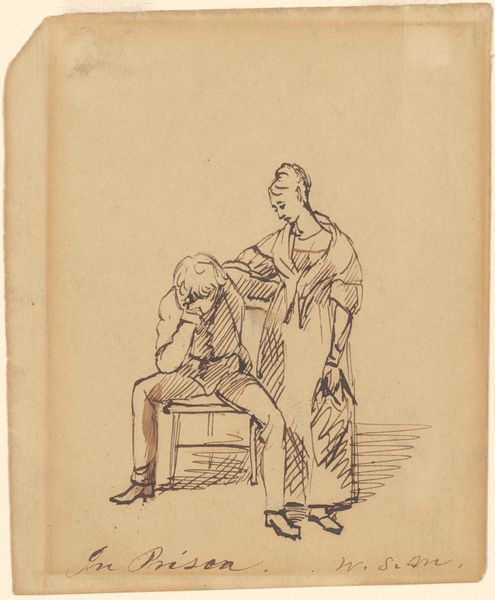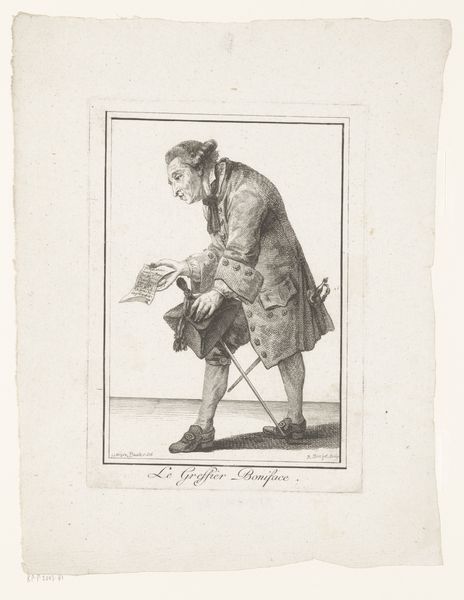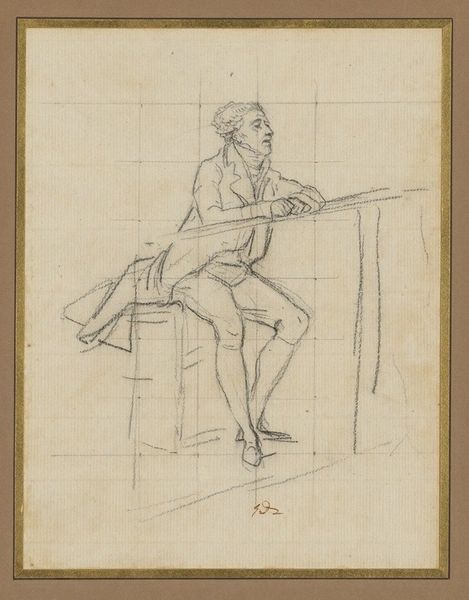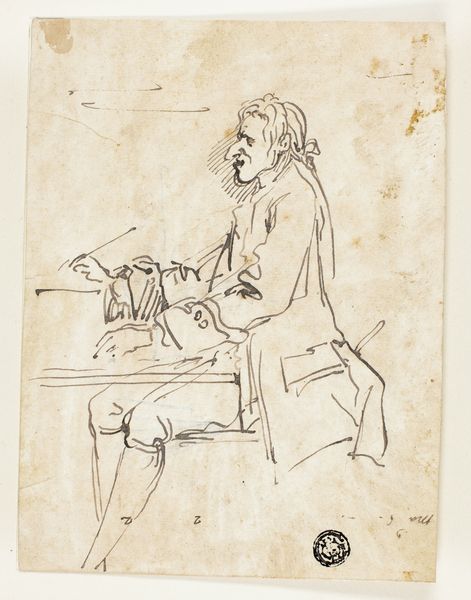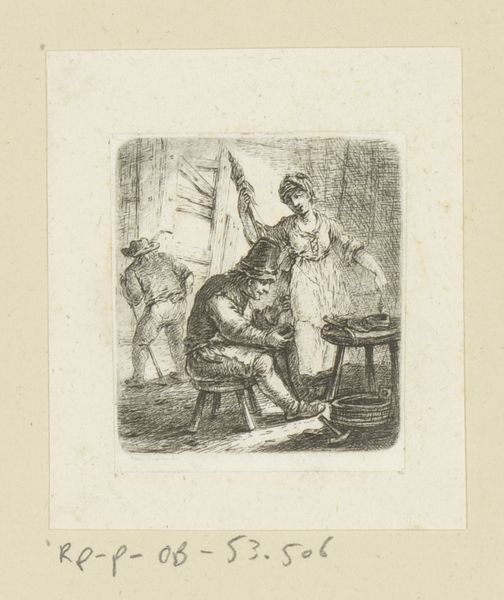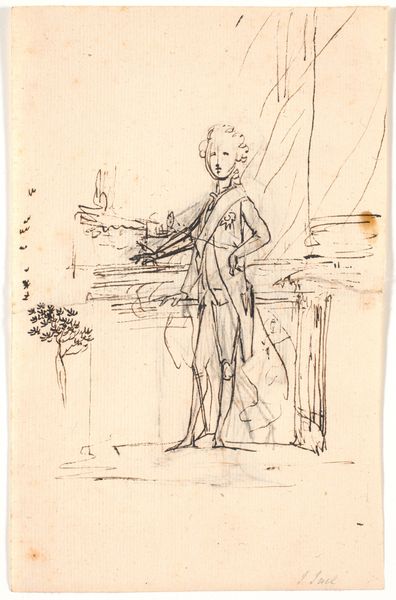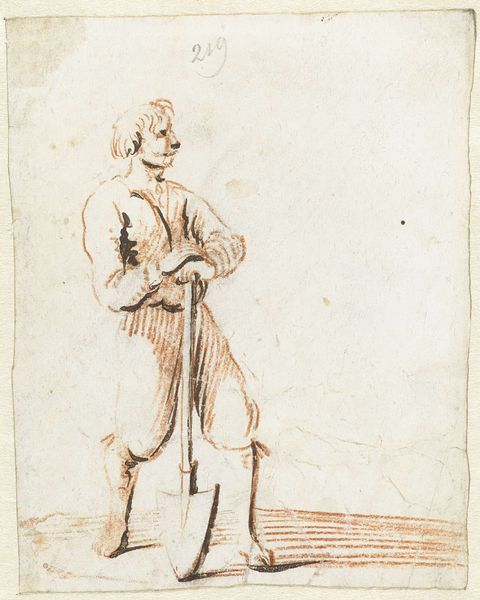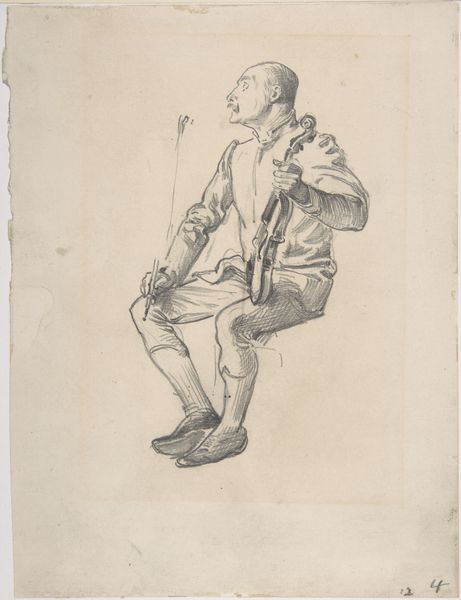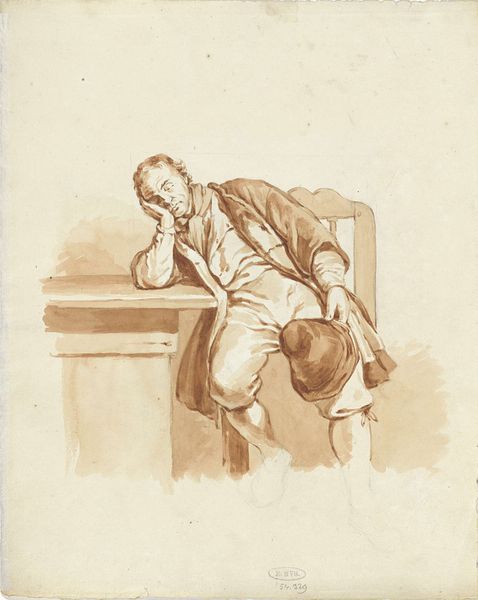
Studie til det holmskioldske familiebillede fra 1787: geheimeråd. Theodor Holmskiold sidden ved et bord 1785 - 1788
0:00
0:00
drawing, ink, pencil
#
portrait
#
drawing
#
neoclacissism
#
pen sketch
#
ink
#
ink drawing experimentation
#
pencil
#
academic-art
Dimensions: 259 mm (height) x 144 mm (width) (bladmaal)
Curator: Let's delve into this preparatory drawing by Jens Juel, "Studie til det holmskioldske familiebillede fra 1787: geheimeråd. Theodor Holmskiold sidden ved et bord," created between 1785 and 1788. It offers a glimpse into the artistic process of the era. Editor: My initial reaction is one of austerity. The monochromatic palette and sparse composition lend the piece a reserved, almost academic air. The subject seems caught in a moment of profound contemplation, or perhaps…disapproval? Curator: Disapproval is an interesting take. I'm immediately drawn to the composition itself: the grid lines lightly etched onto the paper, and how they structure the space occupied by Holmskiold, seated at his desk. There's also a dynamism created by the contrasting, quickly-sketched body parts floating at the edges of the main sketch, possibly for further studies of the arm gesture and legs, providing movement to the seated man’s posture. Editor: Well, the composition reflects the social constraints placed upon figures of importance within 18th-century Danish society. Holmskiold, positioned at his desk, symbolizes power and intellect. But consider the unfinished state; it feels representative of the fractured nature of elite identities of the era. His incomplete posture speaks volumes. The artist leaves visible the construction lines that serve as a cage. Curator: Absolutely, the unfinished quality does open the drawing to many interpretations. What I find striking is how Juel uses the pencil and ink to render the textures of the clothing, juxtaposing them with the bareness of the page, emphasizing the sitter’s presence in a stark way. There’s also the ghostlike arm floating over the figure’s head – a technique from neoclassicism, echoing figures found in ancient Greek pottery! Editor: Yes, neoclassicism infuses the piece with the ideals of rationality and order so idealized during the Enlightenment, while it also reveals an anxiety and unease lurking beneath the surface. Let’s also note, the artist leaves bare studies of his legs – indicating potential foot binding during his life that must now remain invisible, because society says so. This reinforces ideas of gendered constraints, suggesting even men in powerful positions were also constrained by certain aspects of Neoclassical convention! Curator: I hadn't thought of the leg sketch like that; that’s an amazing suggestion! Editor: Thank you. Overall, this "Study" by Juel functions beyond a mere preparatory sketch; it presents us with a layered view of Danish elite identity amidst an era of change. Curator: Indeed! Examining how structure and spontaneity interact in this image truly demonstrates the genius behind Juel's observation and process.
Comments
No comments
Be the first to comment and join the conversation on the ultimate creative platform.
